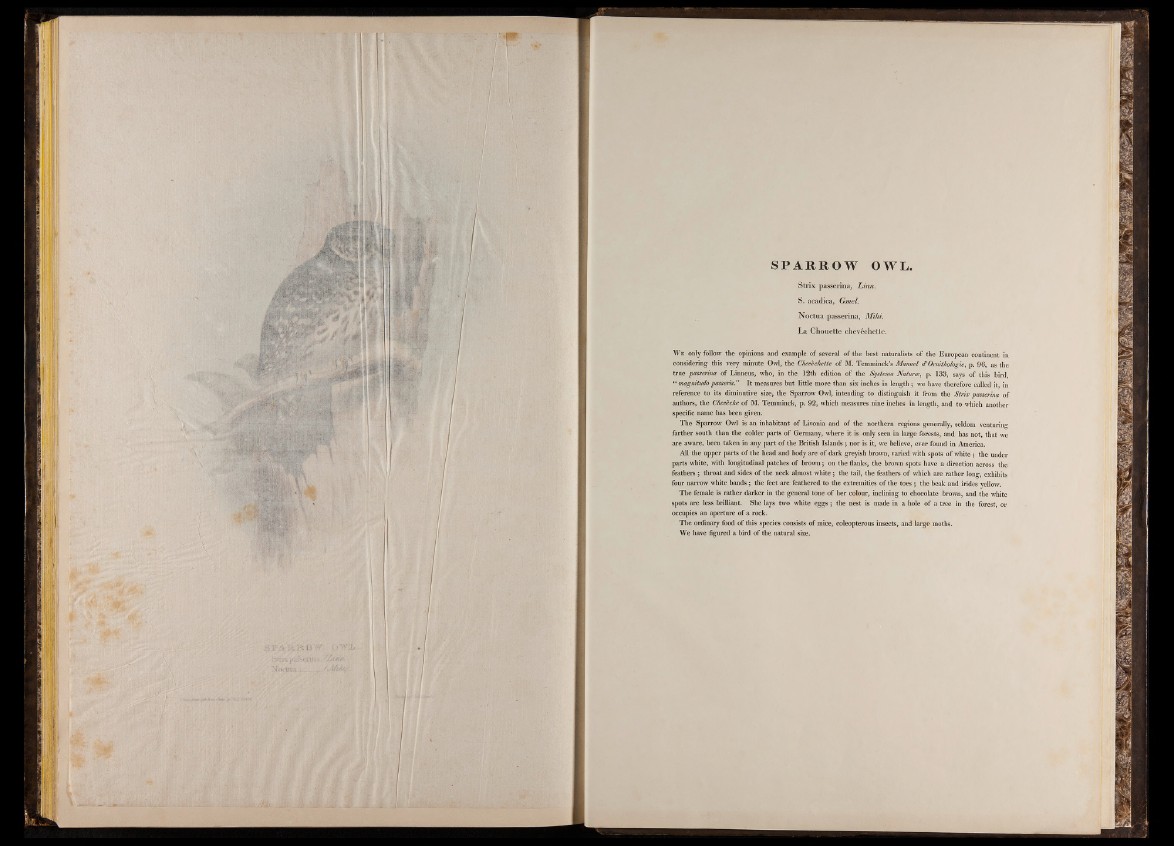
S P A R R OW OWL
Strix passerina, Linn.
S. acadica, Gmel.
Noctua passerina, Mihi.
La Chouette chev&chetle.
W e only follow the opinions and example of several of the best naturalists of the European continent in
considering this very minute Owl, the Chevecfiette of M. Temminck’s Manuel d Ornithologie, p. 96, as the
true passerina of Linneus, who, in the 12th edition of the Systema Natures, p. 133, says of this bird,
“ magnitudo passeris.” It measures but little more than six inches in length; we have therefore called it in
reference to its diminutive size, the Sparrow Owl, intending to distinguish it from the Strix passerina of
authors, the Cheveche of M. Temminck, p. 92, which measures nine inches in length, and to which another
specific name has been given.
The Sparrow Owl is an inhabitant of Livonia and of the northern regions generally, seldom venturing
farther south than the colder parts of Germany, where it is only seen in large forests, and has not, that we
are aware, been taken in any part of the British Islands ; nor is it, we believe, ever found in America.
All the upper parts of the head and body are of dark greyish brown, varied with spots of white; the under
parts white, with longitudinal patches of brown ; on the flanks, the brown spots have a direction across the
feathers; throat and sides of the neck almost white ; the tail, the feathers of which are rather long, exhibits
four narrow white bands ; the feet are feathered to the extremities of the toes ; the beak and irides yellow.
The female is rather darker in the general tone of her colour, inclining to chocolate brown, and the white
spots are less brilliant. She lays two white eggs; the nest is made in a hole of a tree in the forest, or
occupies an aperture of a rock.
The ordinary food of this species consists of mice, coleopterous insects, and large moths.
We have figured a bird of the natural size.